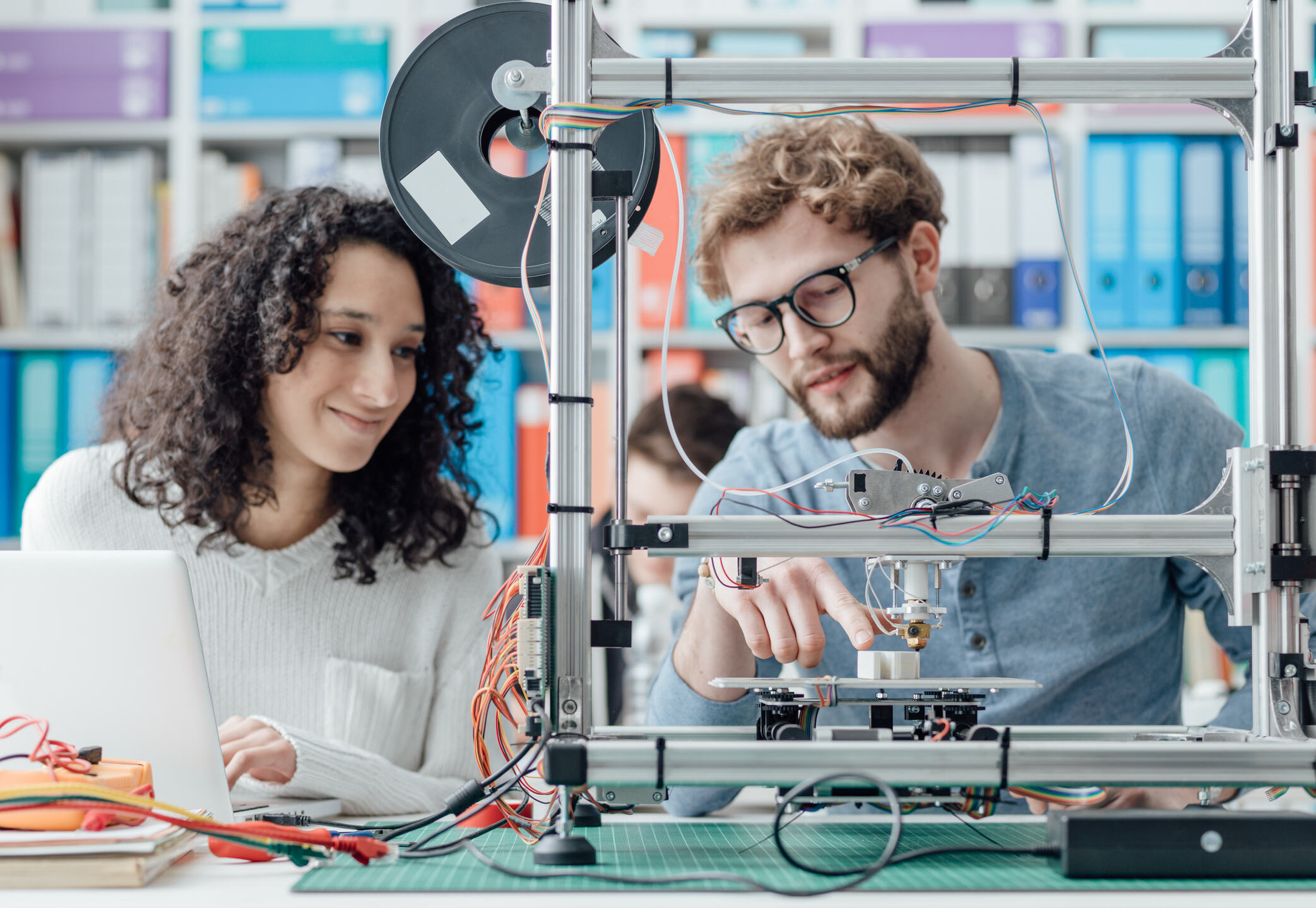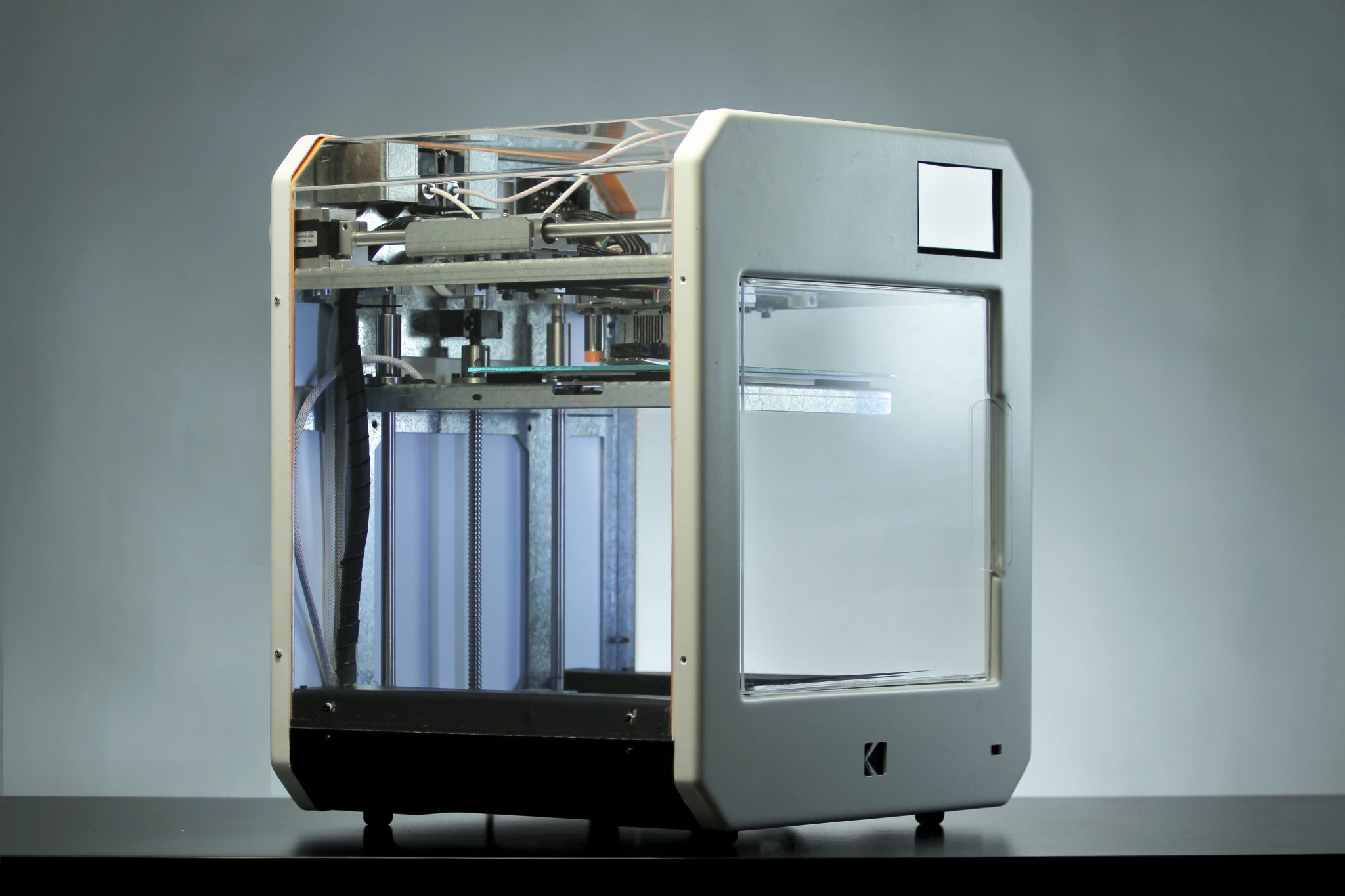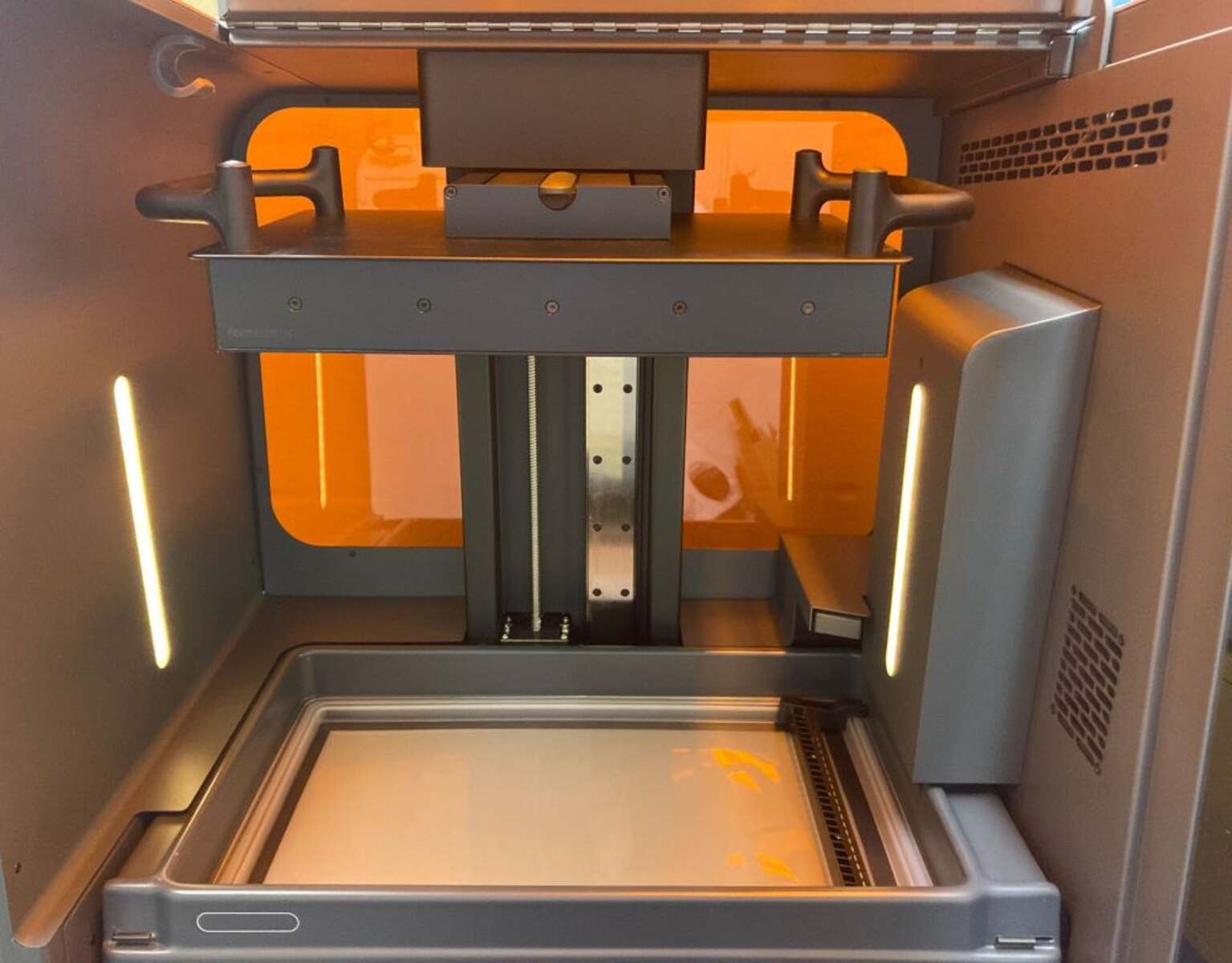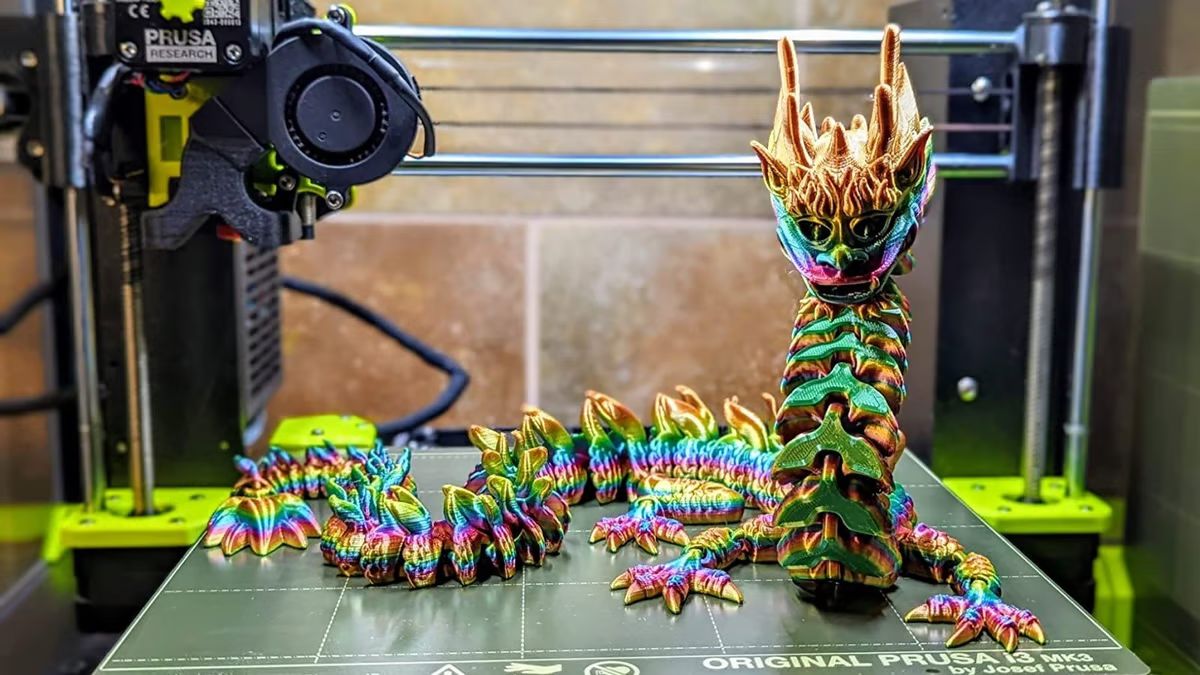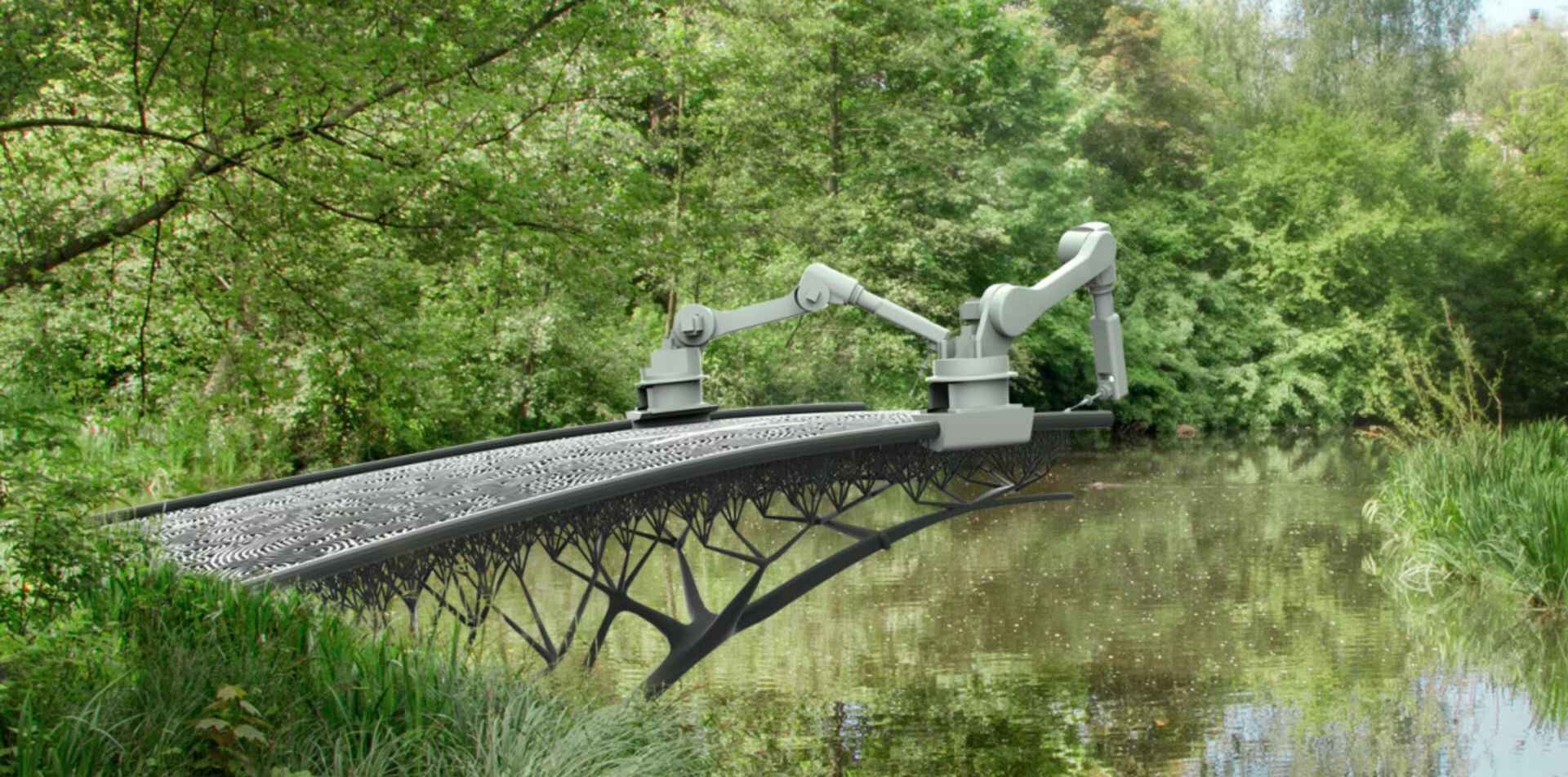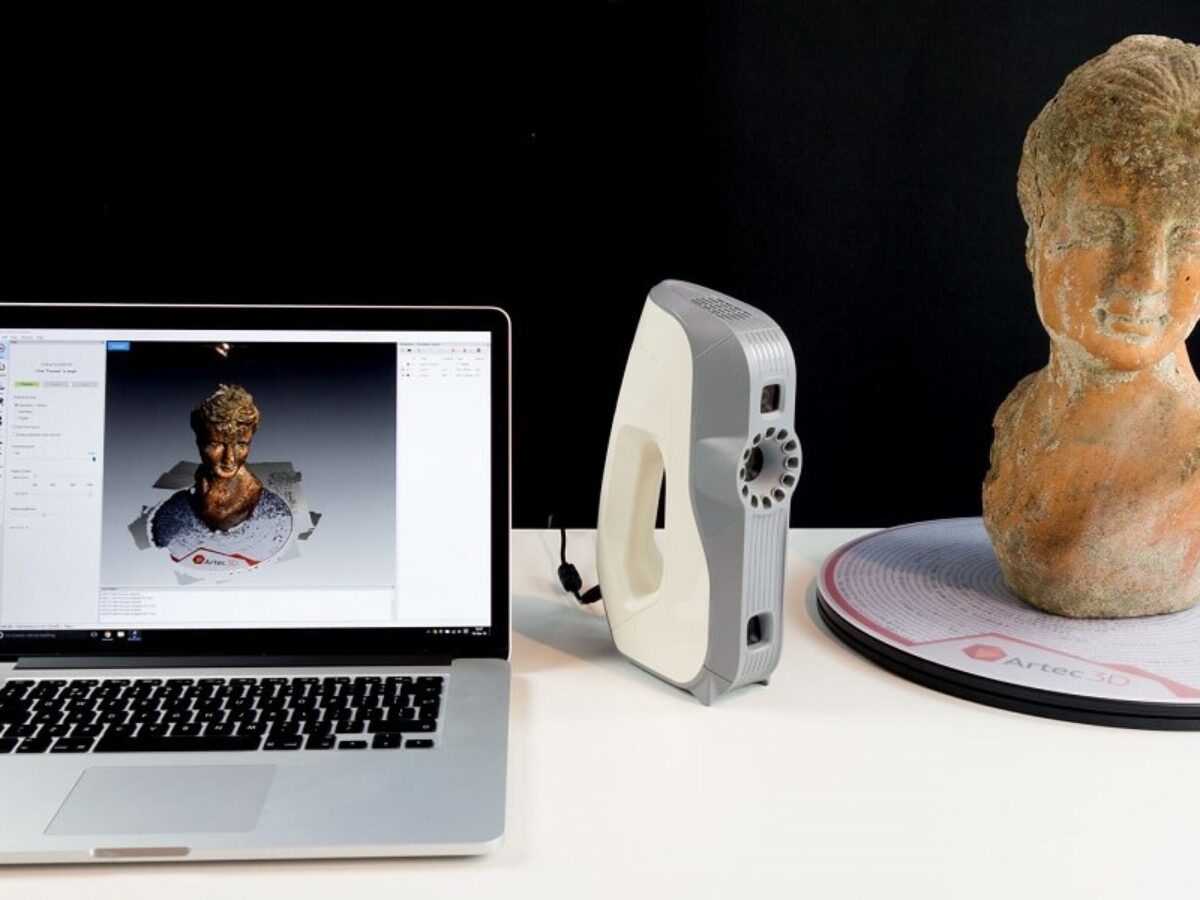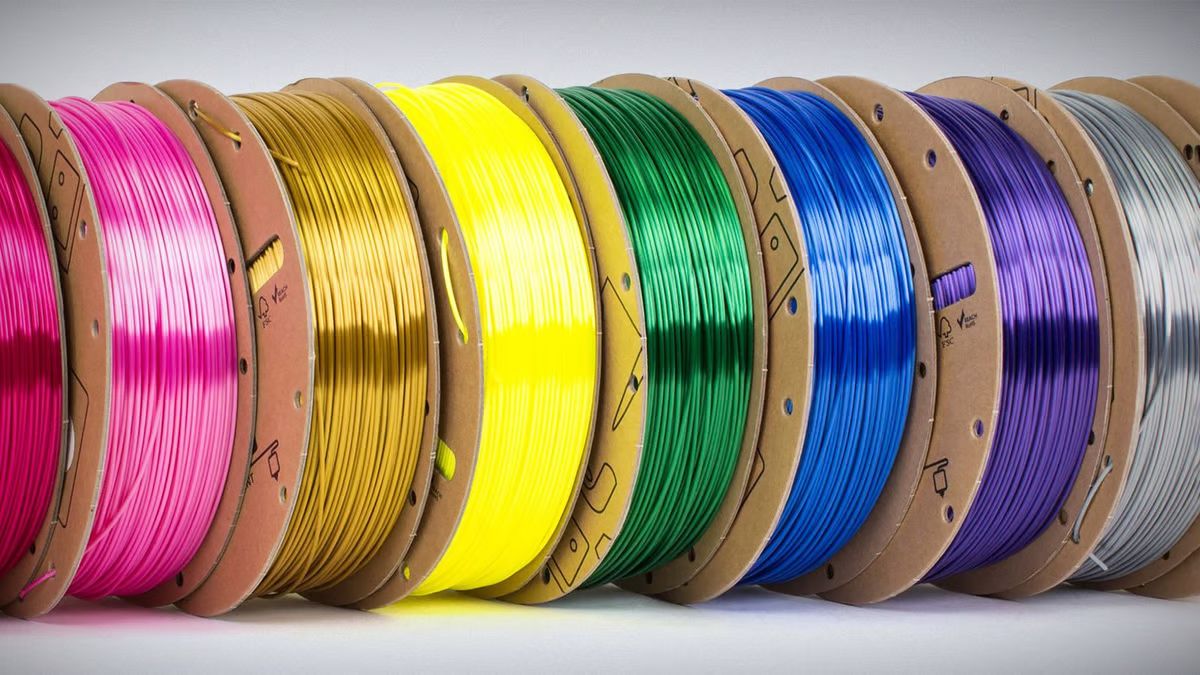Introduction
Welcome to the world of 3D printing! Over the past decade, this innovative technology has revolutionized the manufacturing industry, allowing us to turn digital designs into tangible objects with incredible precision. At the heart of this cutting-edge technology is the 3D printing engineer, a skilled professional who plays a key role in bringing ideas to life.
So, what exactly is 3D printing? Also known as additive manufacturing, 3D printing is a process in which three-dimensional objects are created by layering materials on top of each other. It involves using computer-aided design (CAD) software to create a digital model of the desired object and then slicing it into thin cross-sections. These cross-sections are sent to a 3D printer, which builds the object layer by layer, following the digital blueprint.
Now, let’s delve into the fascinating world of a 3D printing engineer. These individuals are at the forefront of innovation, pushing the boundaries of what is possible in manufacturing. They are responsible for designing 3D models, preparing and setting up printing jobs, troubleshooting any issues that arise during the printing process, collaborating with other departments, and staying up-to-date with the latest advancements in 3D printing technology.
In this article, we will explore the role of a 3D printing engineer in more detail, discuss the essential skills required for success in this field, and highlight the career opportunities available. So, grab your imagination and let’s embark on a journey into the captivating world of 3D printing engineering!
What is 3D Printing?
3D printing, also known as additive manufacturing, is a groundbreaking technology that allows the creation of three-dimensional objects through the layer-by-layer deposition of various materials. Unlike traditional manufacturing methods, which typically involve subtracting or shaping materials to achieve the desired form, 3D printing builds objects by adding material in a precise and controlled manner.
The process starts with a digital model of the object, created using computer-aided design (CAD) software or obtained through 3D scanning. This 3D model is then sliced into thin cross-sections, which the 3D printer uses as a blueprint for constructing the object layer by layer. The printer precisely deposits the chosen material, such as plastic, metal, or even biological matter, following the instructions provided by the digital design.
One of the key advantages of 3D printing is its versatility. It can be used to create objects of various complexities and sizes, ranging from small intricate components to large-scale structures. This technology has found applications in various industries, including automotive, aerospace, healthcare, fashion, and consumer goods.
3D printing offers numerous benefits over traditional manufacturing methods. It enables rapid prototyping, allowing designers and engineers to quickly iterate and refine their concepts before mass production. This reduces time, cost, and waste associated with traditional manufacturing processes. Additionally, 3D printing allows for the production of complex geometric shapes that would be challenging or impossible to create using conventional methods. It also offers customization and personalization options, making it ideal for creating tailored products for individual customers.
Despite its many advantages, 3D printing is not without limitations. The process can be time-consuming, especially for large and intricate objects. The cost of materials and equipment may also pose a barrier for some applications. Furthermore, the strength and quality of 3D printed objects may not always match those produced using traditional methods. However, ongoing advancements in technology are continuously addressing these limitations, making 3D printing an increasingly viable option for various industries.
Now that we have a grasp of what 3D printing is, let’s explore the pivotal role of a 3D printing engineer in bringing this technology to life.
The Role of a 3D Printing Engineer
A 3D printing engineer plays a crucial role in the entire additive manufacturing process. They are responsible for turning ideas and designs into physical objects using 3D printing technology. Their expertise and knowledge make them instrumental in ensuring the successful execution of projects and the production of high-quality 3D printed products.
One of the primary responsibilities of a 3D printing engineer is designing 3D models. They work closely with designers, product developers, and clients to understand their requirements and transform them into digital designs using specialized software. Attention to detail and a strong understanding of manufacturing principles are essential to create accurate and functional 3D models.
Once the digital models are ready, the 3D printing engineer moves on to preparing and setting up the printing jobs. They select suitable materials, determine the optimal printing parameters such as layer thickness and print speed, and ensure the proper calibration of the 3D printer. This involves performing test prints and fine-tuning the settings to achieve the desired outcome.
During the printing process, a 3D printing engineer monitors the progress and ensures that the printer is operating correctly. They troubleshoot any issues that arise, such as material jams, print failures, or inconsistencies in the printed object. This requires technical skills and problem-solving abilities to identify the root cause and implement solutions swiftly.
Collaboration is another crucial aspect of a 3D printing engineer’s role. They work closely with designers, product developers, and other stakeholders to evaluate prototypes, gather feedback, and make necessary adjustments. Effective communication and teamwork are essential to ensure that everyone is aligned and working towards achieving the desired outcome.
As 3D printing technology continues to evolve rapidly, a 3D printing engineer must stay updated with the latest advancements. They need to be aware of new materials, improved printing techniques, and emerging trends in the field. Keeping their knowledge up-to-date enables them to leverage the full potential of the technology and make informed decisions in their work.
The role of a 3D printing engineer goes beyond the technical aspects. They are creative problem solvers, critical thinkers, and innovators, constantly seeking ways to optimize the printing process, improve the quality of printed objects, and explore new applications for 3D printing technology.
Next, let’s dive into the specific skills required to excel as a 3D printing engineer.
Skills Required for a 3D Printing Engineer
Becoming a successful 3D printing engineer requires a unique set of skills that combines technical expertise, creativity, and problem-solving abilities. Let’s explore some of the essential skills necessary to excel in this role.
Strong Understanding of 3D Printing Technology: A 3D printing engineer should possess a thorough understanding of the underlying principles of additive manufacturing. They should be familiar with different 3D printing technologies, such as FDM (Fused Deposition Modeling), SLA (Stereolithography), and SLS (Selective Laser Sintering), and understand their strengths, limitations, and applications.
Proficiency in CAD software: Designing 3D models is a core aspect of a 3D printing engineer’s job. They should be proficient in using computer-aided design (CAD) software to create accurate and functional digital models. Knowledge of specific CAD software, such as SolidWorks, Fusion 360, or AutoCAD, is essential.
Mechanical and Materials Understanding: A solid understanding of mechanical engineering principles and materials is crucial. This includes knowledge of material properties, manufacturing processes, and material selection. Understanding the compatibility between materials and 3D printing technologies is vital for choosing the right materials for specific applications.
Attention to Detail: Precision is key in 3D printing, and a 3D printing engineer must pay close attention to detail. They need to ensure that the digital models are accurately translated into physical objects, verify the dimensional accuracy of the printed parts, and identify and resolve any defects or imperfections.
Troubleshooting and Problem-Solving Skills: 3D printing can present various challenges, from print failures to technical issues. A 3D printing engineer should have excellent troubleshooting and problem-solving skills to identify and address these issues efficiently. They should be able to diagnose problems, analyze root causes, and implement appropriate solutions.
Collaboration and Communication: Effective communication and collaboration skills are crucial for a 3D printing engineer. They need to work closely with designers, product developers, and other stakeholders to understand their requirements, gather feedback, and provide updates on the progress of printing jobs. Good interpersonal skills and the ability to work in a team environment are essential.
Continuous Learning and Adaptability: 3D printing technology is rapidly evolving, and a successful 3D printing engineer should embrace continuous learning and stay updated with the latest advancements in the field. They should be adaptable and willing to explore new materials, techniques, and applications to push the boundaries of additive manufacturing.
Mastering these skills will enable a 3D printing engineer to excel in their role and contribute to the growth and success of additive manufacturing in various industries.
Designing 3D Models
Designing 3D models is a critical aspect of a 3D printing engineer’s role. They are responsible for transforming ideas, concepts, and product specifications into digital designs that can be printed using additive manufacturing technology.
A 3D printing engineer must have proficiency in computer-aided design (CAD) software, which allows them to create detailed and accurate 3D models. CAD software provides a wide range of tools and functionalities to manipulate and shape objects, adding depth, dimensions, and intricate details.
When designing 3D models, engineers take into consideration various factors such as the intended use of the object, the materials to be used, and the desired functionality. They analyze the requirements and specifications provided by the client or the design team and apply their knowledge to transform these requirements into a viable digital model.
During the design process, engineers must ensure that the model is structurally sound and can be successfully printed. They consider factors such as wall thickness, support structures, and material requirements to ensure the model can be manufactured accurately. They pay attention to details that may affect the print quality, such as overhangs, tolerances, and surface finishes.
Iterative design processes are common in 3D printing, involving creating multiple versions of a design, evaluating and refining each iteration based on feedback and testing. Engineers work closely with designers and clients to understand their vision and incorporate any modifications or improvements into the model. They strive to strike a balance between aesthetics, functionality, and the technical aspects of 3D printing.
Moreover, a 3D printing engineer must consider the limitations and capabilities of the chosen 3D printing technology. Different technologies have varying resolution, accuracy, and material compatibility. Understanding these aspects is crucial for optimizing designs and achieving the desired results.
Designing 3D models requires a blend of technical expertise, creativity, and an eye for detail. The ability to visualize objects in three dimensions and translate them into a digital form is a valuable skill. By effectively designing 3D models, engineers contribute to the successful realization of ideas and the production of functional, high-quality 3D printed objects.
Preparing and Setting Up Printing Jobs
Once the 3D models are designed, the next crucial step for a 3D printing engineer is preparing and setting up the printing jobs. This involves a series of tasks aimed at ensuring a successful and efficient printing process.
One of the key responsibilities is selecting the appropriate materials for the printing job. Different materials offer varying properties such as strength, flexibility, heat resistance, and color options. Depending on the desired outcome and specific requirements, the engineer must choose the best-suited material for the job.
After selecting the material, the engineer needs to determine the optimal printing parameters. They need to define settings such as layer thickness, print speed, temperature, infill density, and support structures. These settings can significantly impact the outcome of the print in terms of surface finish, strength, and printing time.
Calibrating and setting up the 3D printer is another critical aspect of the preparation process. The engineer ensures that the printer is properly leveled, and the build plate or print bed is correctly positioned. They also verify that the extruder is properly calibrated to ensure precise deposition of the material during the printing process.
Prior to initiating the actual printing, a test print or a small-scale prototype may be created to ensure that the settings and parameters are optimized. This allows the engineer to identify any potential issues and make necessary adjustments before starting the final job. It is important to assess factors such as layer adhesion, print accuracy, and overall print quality during the test print phase.
During the printing process, the engineer closely monitors the progress and parameters of the print job. They ensure that the print is proceeding smoothly without any interruptions or errors. In case of any issues such as material jams, layer shifting, or extrusion problems, the engineer troubleshoots and rectifies them promptly to minimize any impact on the final print quality.
Additionally, maintaining a clean and well-organized workspace is essential. The engineer keeps the 3D printer and the surrounding area free from dust, debris, and other potential contaminants that may compromise the print quality. They also ensure that all necessary tools, materials, and safety equipment are readily available for the printing process.
By effectively preparing and setting up printing jobs, a 3D printing engineer ensures a smooth and successful printing process, leading to the production of high-quality, accurate, and reliable 3D printed objects.
Troubleshooting and Maintenance
Troubleshooting and maintenance are integral parts of a 3D printing engineer’s role. As with any technology, 3D printers can encounter issues and require regular maintenance to ensure optimal performance and consistent print quality.
When issues arise during the printing process, the engineer must possess strong troubleshooting skills to identify the root cause of the problem. Common issues include material feed problems, layer adhesion issues, print quality defects, and printer calibration or software errors. By systematically analyzing the problem and using their technical expertise, the engineer can determine the appropriate solutions.
One important troubleshooting step is examining the 3D printer’s mechanical components. This includes verifying that the belts and pulleys are properly tensioned, the guide rods are clean and lubricated, and the print head is correctly aligned. Regular maintenance of these components can prevent issues such as misalignments, stuttering movements, or print artifacts.
Software-related issues can also hamper the printing process. The 3D printing engineer must check that the printer firmware and slicing software are up to date. They may need to adjust print settings or recalibrate the printer to ensure compatibility with different materials and improve print quality.
Closely monitoring the printing process is vital, especially during the initial stages of a new print or when using new materials. The engineer pays attention to the extruder temperature, filament flow, and layer deposition to identify any abnormalities. In case of any deviations or irregularities, they can make the necessary adjustments to minimize the impact on the final print outcome.
Regular maintenance is key to keeping the 3D printer operating optimally. This includes cleaning the print bed or build plate, removing debris or residue from the extruder, and performing routine maintenance tasks recommended by the manufacturer. Proper cleaning and maintenance help in preventing clogs, improving print adhesion, and extending the lifespan of the printer.
Additionally, a 3D printing engineer should stay updated on the latest troubleshooting techniques and best practices. They can follow online communities, attend workshops, and consult with experienced professionals to broaden their knowledge base and enhance their ability to resolve complex issues.
By effectively troubleshooting and performing regular maintenance, a 3D printing engineer ensures that the printing process is smooth and reliable. They can minimize costly print failures, maintain consistent print quality, and maximize the efficiency and longevity of the 3D printer.
Collaboration with Other Departments
Collaboration is a crucial aspect of a 3D printing engineer’s role, as they work closely with various departments and stakeholders to ensure successful project outcomes. By fostering effective communication and teamwork, a 3D printing engineer creates an environment conducive to innovation and the seamless integration of 3D printing technology within the organization.
One of the key departments that a 3D printing engineer collaborates with is the design department. They work together to translate design concepts into 3D printable models that meet the requirements and specifications of the project. This collaboration ensures that the design intent is accurately captured and that the final 3D printed objects are not only functional but also aesthetically pleasing.
Collaboration with the product development team is vital for integrating 3D printing into the overall product development lifecycle. The engineer works side by side with product development professionals to incorporate 3D printing technology into the prototyping and testing phases. By leveraging the rapid prototyping capabilities of 3D printing, the team can iterate and refine designs quickly, saving time and cost.
Furthermore, collaboration with the manufacturing department is essential to ensure seamless production integration. The 3D printing engineer works closely with manufacturing professionals to determine feasibility, scalability, and cost-effectiveness of 3D printed components or products. They collaborate to identify areas where 3D printing can enhance manufacturing processes, streamline production, and improve overall efficiency.
Effective collaboration is also crucial with the materials and procurement departments. Working together, the 3D printing engineer and the materials department explore and evaluate new material options that can be used in the 3D printing process. They collaborate to understand material properties, compatibility with different 3D printing technologies, and the availability of suitable materials in the market.
Collaboration with management and executives is valuable in exploring and implementing 3D printing initiatives within the organization. The engineer can provide insights and recommendations regarding the integration of 3D printing technology into the company’s overall strategy, portfolio, and business model. They contribute to decision-making processes and provide expertise on the benefits and limitations of 3D printing technology.
Open and continuous communication with all stakeholders is pivotal in successful collaboration. Regular updates, progress reports, and feedback sessions foster transparency and ensure that everyone is aligned with project goals. Effective collaboration encourages innovation, facilitates knowledge sharing, and enhances the overall efficiency and effectiveness of the 3D printing process within the organization.
Staying Updated with Technology Advances
In the rapidly evolving field of 3D printing, it is crucial for a 3D printing engineer to stay updated with the latest technology advances. By keeping abreast of new developments, materials, techniques, and software, engineers can leverage the full potential of 3D printing and ensure they are at the forefront of innovation.
One way to stay updated is by regularly reading industry publications, blogs, and research papers related to 3D printing. These sources provide valuable insights and updates on new technologies, breakthrough research, and emerging trends. Engineers can gain information about advancements in 3D printing hardware, software, materials, and applications, enabling them to adapt their practice accordingly.
Attending conferences, seminars, and trade shows is another effective way for engineers to stay updated. These events bring together experts, researchers, and industry professionals to share knowledge and showcase the latest advancements in 3D printing. Engineers can attend presentations, participate in workshops, and engage in discussions to broaden their understanding of new technologies and gain firsthand experience.
Collaborating with other professionals in the field is also beneficial. By networking and engaging in discussions with peers, engineers can exchange knowledge, share experiences, and learn from each other’s expertise. Online forums, social media groups, and professional communities provide platforms for engineers to connect, ask questions, and stay updated with the latest discussions and developments in the industry.
Continuing education and professional development courses are valuable resources for engineers to enhance their knowledge and skills. Many universities, training centers, and online platforms offer specialized courses in 3D printing technology. Engineers can enroll in these courses to learn about the latest techniques, software tools, and best practices in the field. Continuous learning ensures that engineers are equipped with the most up-to-date knowledge and expertise.
Engaging with 3D printing manufacturers and suppliers is also crucial for staying updated. Manufacturers regularly release new printer models, software updates, and material innovations. By keeping in touch with manufacturers and suppliers, engineers can learn about new features, capabilities, and enhancements that can improve their workflow and expand their 3D printing capabilities.
Finally, engineers can stay updated by actively participating in research and development projects. Involvement in R&D projects allows engineers to be at the forefront of new discoveries and innovations in 3D printing. Through hands-on experimentation and collaboration with researchers, engineers can contribute to pushing the boundaries of the technology and stay ahead of the curve in terms of advancements.
By proactively staying updated with technology advances, a 3D printing engineer ensures that they are equipped with the knowledge and skills necessary to capitalize on the latest developments in the field. This enables them to deliver optimal results, remain competitive, and embrace the full potential of 3D printing technology.
Career Opportunities for 3D Printing Engineers
The field of 3D printing is expanding at a rapid pace, creating exciting career opportunities for skilled professionals in the industry. As the adoption of 3D printing continues to rise across various sectors, there is a growing demand for 3D printing engineers who can harness the power of this technology. Let’s explore some of the potential career paths for 3D printing engineers.
1. Design Engineer: Many companies require design engineers with expertise in 3D printing. These engineers work closely with product designers and developers to create innovative and functional designs that can be efficiently manufactured using 3D printing technology. They play a key role in optimizing designs for additive manufacturing and ensuring the successful production of 3D printed objects.
2. Application Engineer: Application engineers specialize in identifying and implementing 3D printing solutions for specific industries or applications. They work closely with clients to understand their requirements and tailor 3D printing technologies and processes to meet their needs. Application engineers often collaborate with product development teams to integrate 3D printing into the manufacturing process and support product innovation.
3. Materials Engineer: Materials engineers play a critical role in developing and optimizing materials for 3D printing. They explore new materials, conduct material testing and analysis, and identify materials suitable for specific 3D printing applications and technologies. With their deep knowledge of material properties and compatibility, materials engineers contribute to pushing the boundaries of material innovations in additive manufacturing.
4. Process Engineer: Process engineers focus on optimizing 3D printing processes to enhance productivity, quality, and efficiency. They analyze and improve print parameters, troubleshoot printing issues, and develop standard operating procedures for the 3D printing workflow. Process engineers play a vital role in maximizing the yield and reliability of 3D printing operations within an organization.
5. Research and Development Engineer: Research and development engineers drive innovation in 3D printing by exploring new technologies, materials, and applications. They work on advanced projects to push the boundaries of additive manufacturing, develop new fabrication techniques, and improve the performance and capabilities of 3D printers. A strong research background and a passion for pushing the limits of technology are essential for this role.
6. Education and Training: As 3D printing continues to gain prominence, the need for skilled professionals to train others in the field also increases. Some 3D printing engineers choose to pursue careers in education, working as instructors, trainers, or professors in academic institutions or training centers. They impart their knowledge and expertise to the next generation of 3D printing professionals.
These are just a few examples of the wide range of career opportunities available for 3D printing engineers. As technology advances and more industries adopt additive manufacturing, the demand for skilled professionals in this field will continue to grow. 3D printing engineers can carve out rewarding careers in design, manufacturing, research, development, and education, contributing to the advancement of this transformative technology.
Conclusion
The role of a 3D printing engineer is pivotal in the world of additive manufacturing. These skilled professionals bring ideas to life by designing 3D models, preparing and setting up printing jobs, troubleshooting issues, collaborating with various departments, and staying updated with the latest technology advances.
With their expertise in 3D printing technology, CAD software, materials, and problem-solving skills, 3D printing engineers play a vital role in revolutionizing the manufacturing industry. By harnessing the power of 3D printing, they bring innovation, customization, and efficiency to the production process.
By collaborating with designers, product developers, and other stakeholders, 3D printing engineers ensure that the designs are accurately translated into physical objects. They optimize printing parameters, troubleshoot issues, and maintain the 3D printer to ensure the successful completion of printing jobs.
Staying updated with the latest technology advances is essential for 3D printing engineers. By continuously learning about new developments, materials, techniques, and applications, they can stay at the forefront of this rapidly evolving field and unleash the full potential of 3D printing technology.
The career opportunities for 3D printing engineers are expanding as more industries embrace additive manufacturing. Design engineering, application engineering, materials engineering, process engineering, research and development, and education are some of the promising career paths for these professionals.
In conclusion, 3D printing engineers are catalysts of innovation. Their expertise and skills drive the advancement of additive manufacturing, enabling us to create custom, complex, and functional objects with ease. As this transformative technology continues to revolutionize industries worldwide, the role of the 3D printing engineer will become increasingly critical in shaping the future of manufacturing.







